Black carrots and their cultivation
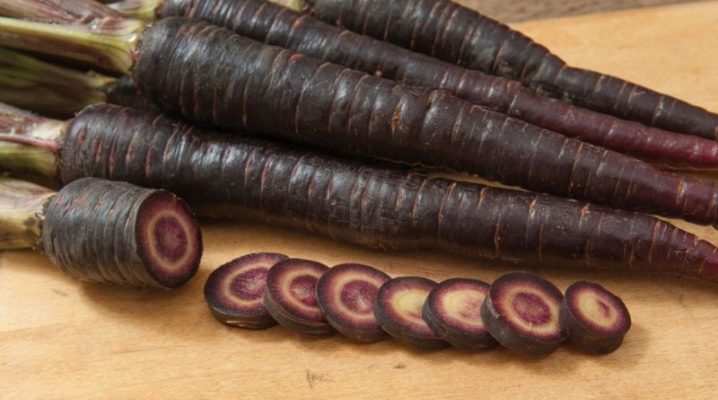
Previously, black carrots were grown only in some European countries. In different countries, the culture was called differently and was used both for food and for medicinal purposes. The culture is relatively unpretentious. That is why it can be grown almost everywhere. All about what a plant is, what it has in common with ordinary carrots, important points in the process of growing a root crop and much more will be told in this article.
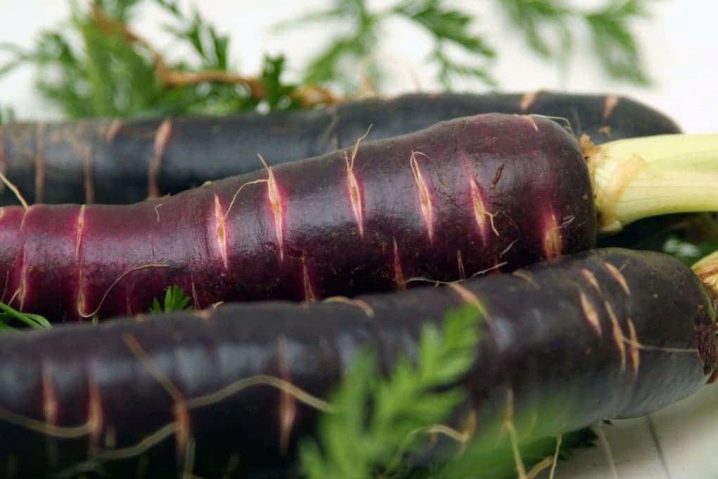
What does it look like and where does it grow?
In another way, black carrots are called scorzonera or Spanish goat. The plant is a root vegetable and, obviously, looks like a carrot, but differs from it in color. References to the fact that the vegetable was used for food can be found in the works of historians of the 16th century. In particular, black carrots were popular at that time among the peoples of the Mediterranean. Now its use is becoming more widespread, although in the domestic territory the vegetable is still not in great demand.

As already mentioned, the main visible difference from the usual carrots is the root of a dark (black-burgundy) color. The culture is also called sweet root. It can grow up to 150 cm in height and has dark green leaves. The leaves themselves are slightly ovoid. Scorchonera blooms, usually in May, with large yellow flowers smelling of vanilla. After the fruit is tied (achene).
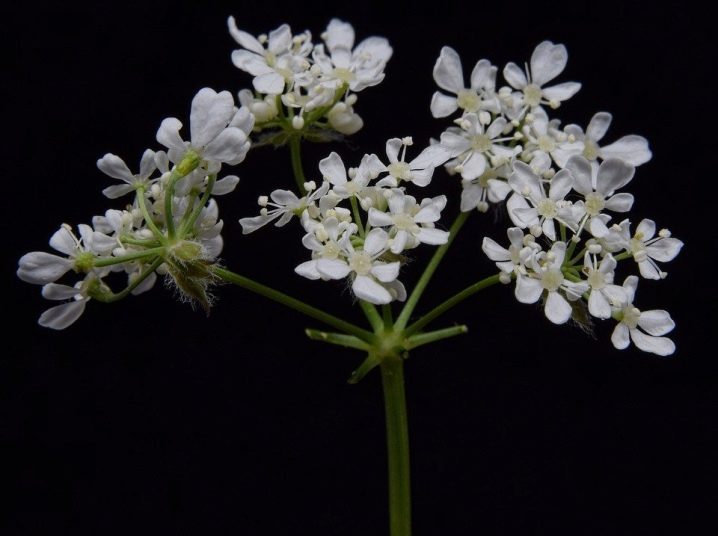
Inside, black carrots are white, while the flesh is dense and usually juicy. The scent of the pulp can vaguely resemble the aroma of vanilla. The root crop is cylindrical and usually reaches 15 cm in length and 5 cm in diameter. An average black carrot can weigh between 150 and 200 grams. It may seem that the taste of black carrots is similar to our familiar counterpart. However, this is not the case: it tastes more like a radish or radish. It is known for its rich mineral composition: it contains magnesium, potassium, phosphorus, calcium and iron. With regular use, it partially normalizes digestion, liver and kidney function.
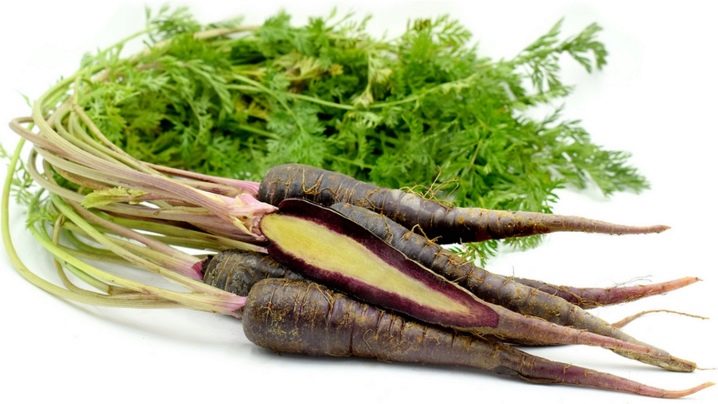
The homeland of this vegetable is India, Pakistan, Egypt and even Turkey, but now, of course, carrots are ubiquitous. It is grown both throughout Asia and in Europe and America. It is especially actively grown in America and China. On the domestic territory it is considered an exotic vegetable and is grown in very small quantities. The main place of growth is fields.
Often wild culture can be found along the roads. It should not be confused with blackroot, which is a poisonous plant.

Description of varieties
At the moment, about 200 varieties of black carrots are known. Due to the lack of mass cultivation of this vegetable in the domestic territory, only a few varieties are available.
- A copy with the sonorous name "Russian giant" contains a large amount of vitamins and minerals, but does not have good taste. Has a relatively budget price - up to 20 rubles per 1 kg. The plant produces a rich harvest that is usually rarely found on the market. Seeds are easier to purchase: online stores or private sellers will help.
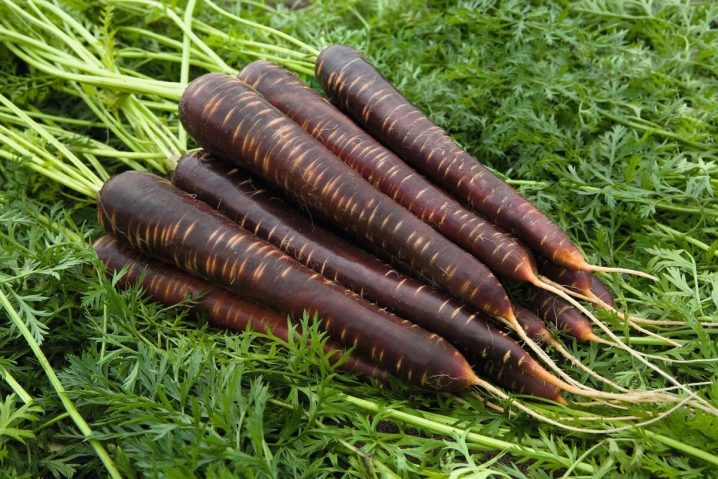
- "Sunny Premiere". A characteristic feature is the elongated shape of the leaves. The color of the root crops is not black, but dark brown. The roots themselves grow up to 30 cm in length and can weigh 60-80 grams. The crop can be harvested as early as 3 months after planting.
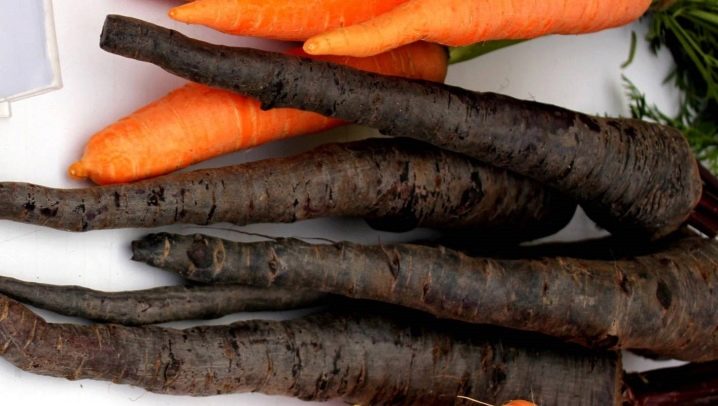
- The variety specially bred for people with diabetes mellitus is "Gypsy". Has a sweetish taste. The surface of the plant can grow up to 1.5 m in height. Root crops can reach 30 cm in length, juicy inside (filled with milky juice).
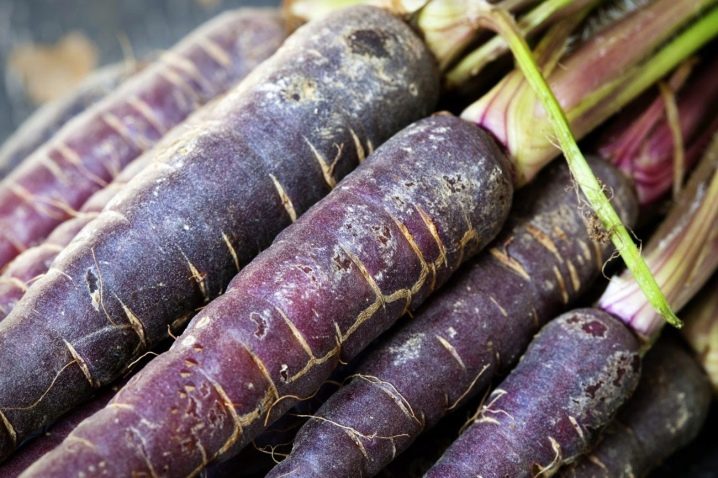
Landing
In general, black carrots are easier to grow than regular carrots. For planting root crops, it is best to choose a sunny area. You do not need to plant the plant where its relatives used to grow - other root crops. Does not like scorzonera and the presence of drafts. Fertilizers must first be applied to the soil. For this, organic or mineral formulations are suitable. Often, gardeners apply fertilizers containing phosphorus and potassium.
It is also necessary to dig the area to a depth of at least 30 cm. As for the acidity level, the soil must be neutral.
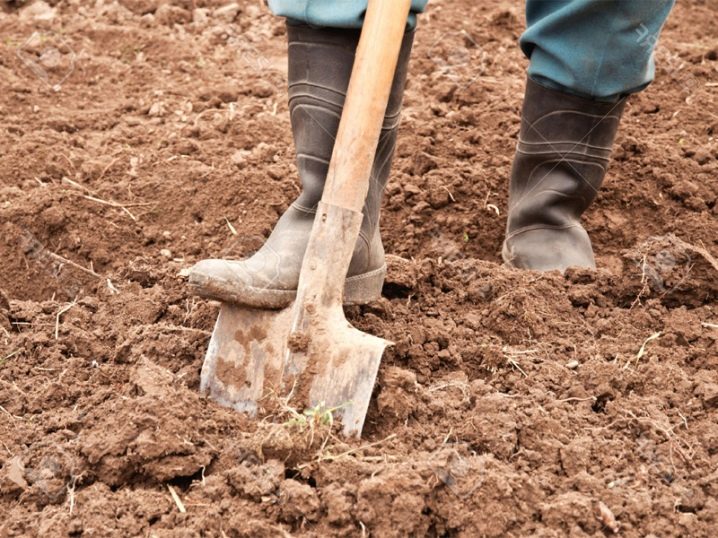
Seeds are usually used to propagate black carrots. It is recommended to take seed from the previous year. Although the use of freshly harvested seeds is also allowed. In order to sow 10 sq. meters of soil, you need to take about 15 grams of seed. Immediately before planting, the seed is soaked in water for a couple of hours. If some of the seeds have surfaced, then they need to be thrown away: they, most likely, will not germinate. After that, all the seed is placed on a damp cloth. After 2 or 3 days, the grains will sprout. All this time, you need to moisten the cloth or the seeds themselves with water. After the seeds have germinated, they are transferred to open ground. In advance, you need to prepare shallow grooves 1.5 cm deep.
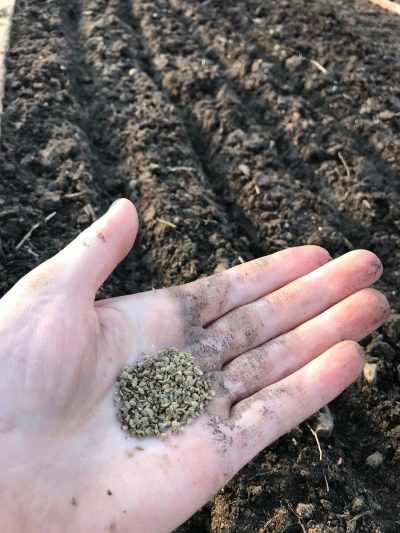
It is best to carry out the planting process in March. Autumn planting is allowed (at the end of August). In the second case, it will be possible to harvest the crop only next summer. In warm regions, planting can be done even in November. If the carrots are grown in a greenhouse, then sowing can be done at the beginning of spring and continue until the end of summer.
The planting scheme is quite simple: carrots need to be planted in a row, placing the plants 5 cm apart and leaving 30 cm of free space between the beds. With a properly carried out planting, the first shoots can be observed almost a week or 10 days after planting. It must be remembered that after germination, the carrots must be thinned out and left between the seedlings for more than 10 cm of free space. If this is not done, then the black carrots will go into the arrow.
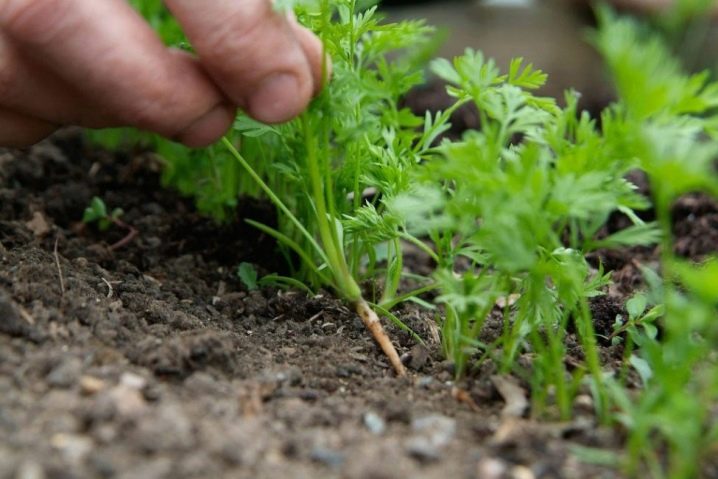
Care
The culture can grow in almost any climate: it is frost-resistant, it can easily winter in the soil, it tolerates temperature drops and a short drought. It can grow equally well both in the Moscow region and in Siberia. However, it does not tolerate thickening and shade. It is necessary to thin out the beds, as well as transplant the carrots where there is no shade.
Watering and feeding
At the initial stage, the seedlings need to be watered 3 times a week, after which the number of waterings can be reduced to 2 times. Poor (rare or poor) watering can negatively affect the quality of the future harvest: carrots become too bitter and shrink. Watering black carrots too often and too much can cause the roots to rot. Very young shoots do not tolerate an abundance of watering.

Top dressing is best done during that period of the day when there is the least amount of sunlight: in the morning and in the evening after sunset.
Loosening, mulching, weeding
Growing scorzonera at home also requires loosening. Loosening is necessary in order to fluff the ground that has dried up from irrigation and provide air access to the roots. This can be done only after the seedlings have appeared. If loosening is carried out earlier, then the seedlings will die. Loosening should be repeated as soon as earthen crusts form.
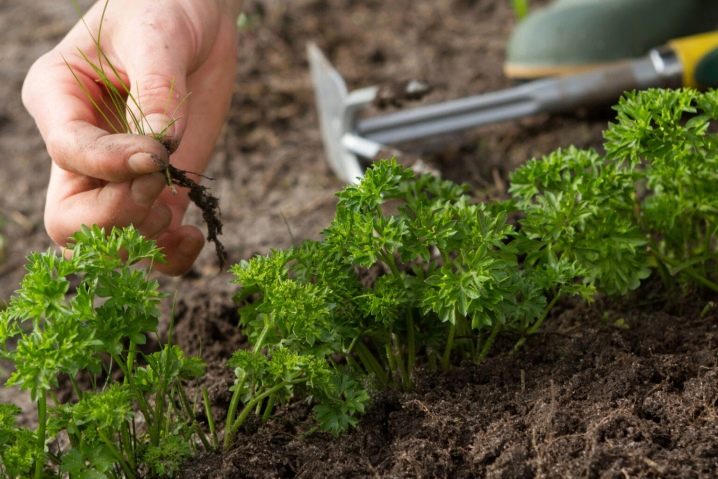
If the soil around the plants dries out too often and quickly, then mulching should be done. For this, the soil around the plants is sprinkled with sawdust and dry grass. Mulching can only be carried out for plants above 5 cm. It is imperative to carry out weeding.Otherwise, the roots will become more elongated and thinner.
Diseases and pests
The main enemy of black carrots is fungal diseases. If the plant is struck by white or black rot, then it will be enough to regularly spray it with a solution of copper sulfate and loosen the soil. In the presence of black rot, treatment of the plant with "Rovral" can also help. The drug can be purchased at a flower shop. If gray spots began to appear on the leaves, this means that the plant was struck by cercospora. Bordeaux liquid is considered effective in the fight against this disease.
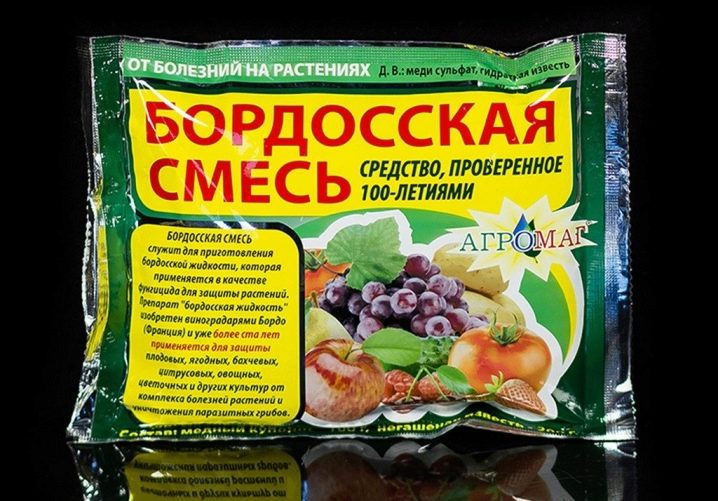
If traces of moths are found, it is necessary to start regularly spraying carrots with a decoction of tomato stems. The remedy for leaf beetles is the same spraying, but with soapy water. If the carrots are affected by nematodes, then it needs to be treated with Dekaris.













The comment was sent successfully.